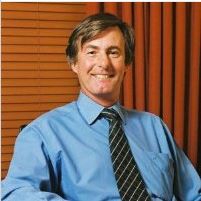Timing SA rate hiking cycle2014-05-27 Since this January, SARB has made it crystal clear that it is in an interest rate raising cycle. It is a given that SA interest rates will rise. What is left unsaid is the timing, leaving this data dependent.
However, all such expressed conviction of being in a rising rate cycle creates expectations of seeing rate hikes. This, however, can easily get ahead of itself. For one, the forward-looking SARB, claiming at least 12-18 months forward vision, may be comfortable in looking through short-term inflation humps, even when moving outside the target range of 3%-6% if the expectation is then for a fallback, with the economy weak throughout. Such modest temporary inflation humping may not disturb expectations of future inflation unduly, as markets and economic agents also do look through the short-term data. What is perhaps more important is that there is deep vigilance about events that are expected to definitely threaten the capital flow, the level of the Rand and the subsequent inflation playout and expectations. On this score, the immediate short-term is uncertain if not without event risk, while the medium-term (from 15 to 60 months out) is risk-loaded to the gills. There seems little sense in raising interest rates further in the short term while global markets are going through a quiet patch and our Rand and inflation are not under renewed pressure. For if raising rates with some determination in the short-term, as proposed by some so far this year, we could be arriving at some modestly higher level of interest rates by the middle of next year when our rates might then be expected to level off, while the real rate-threatening events may by then be expected to have commenced overseas and potentially last for up to three years or longer. No sense in wasting your only ammunition prematurely. If events, capital flows and Rand stay reasonably calm in the short term, hold off on further interest rate hikes for the time being even as inflation humps through yearend 2014 in ways already known for months now. Instead, focus the beady eye on the key global central banks, and what they are likely to do. Move ahead of them, like a surfer ahead of a cresting wave, but not too far ahead and not too late, and ride the bow wave made by their rumpus. That would imply starting ahead of the Fed start (in August 2015?), and then thereafter following through at the Fed's pace as it gradually lifts Fedfunds, probably by at least 3% in 0.25% instalments, possibly like a stretch limo over a three to four year period. This would be late as seen from today's juncture, but still ahead of the Fed, and possibly a little faster paced as risk-reward configurations in markets are likely to shift dynamically, but not necessarily unduly hasty, for the weak SA economy doesn't warrant it, the likely Fed pace and increments may not warrant it, and by the time we get there the veteran market reaction functions may not warrant it either. Events willing of course. Then we still have the not so minor complication that the Fed and BoE may possibly start raising rates gradually from mid-2015 even as the BoJ and PBoC keep aggressively or mildly easing, with the ECB about to start a new policy easing cycle from next week, with as yet many potential surprises ahead of us. These varying policy stances around the world may lead to many market cross-currents, some of which adverse to us, while others may in fact be supportive, and it all adding up to a global dynamic where the SA policy kneejerk of instant action may not be quite appropriate. So even more caution rather than less caution warranted in timing the SA rate raising cycle from next year onward. Something mentioned by all central banks today as a special event risk feature that can seriously throw the overall picture are geopolitical events (like Ukraine) while Fed chair Yellen also keeps a close eye on the US housing market and the Chinese slowdown and/or banking events. And all this primarily with growth (and inflation) downside in mind (rather than upside), potentially extending the dovish policy stance timing and period, also globally. This is not to say that there isn't inflation and growth upside risk globally, as some analysts overseas keep punting. It is just not in focus at present, even if not forgotten. Bottom line: an extremely complex global prospect that will certainly affect the trajectory of our SARB interest rate tightening through 2018, in addition to which we still have to look through domestic events, whether political, labour, structural, macro and what not, to understand how much the real sector of the economy can stand while traversing this very challenging period. SARB can be expected to be very wary and cautious, as every MPC statement and Marcus speech reflects. But the language and decisions also show healthy internal debate where overhasty decisions are not likely to be made, given such an uncertain complexity, locally and globally. Timing will be everything. Don't be too mechanical about it. Go with the flow and rhythm. Feel your way. Dance naturally rather than stiffly formal. If this doesn't come naturally, don't despair. Do it anyway....... Cees Bruggemans Consulting Economy Bruggemans & Associates Website www.bruggemans.co.za Email economics@briggemans.co.za Twitter @ceesbruggemans LinkedLn |
Timing SA rate hiking cycle
Copyright © 2025 KwaZulu-Natal Top Business
